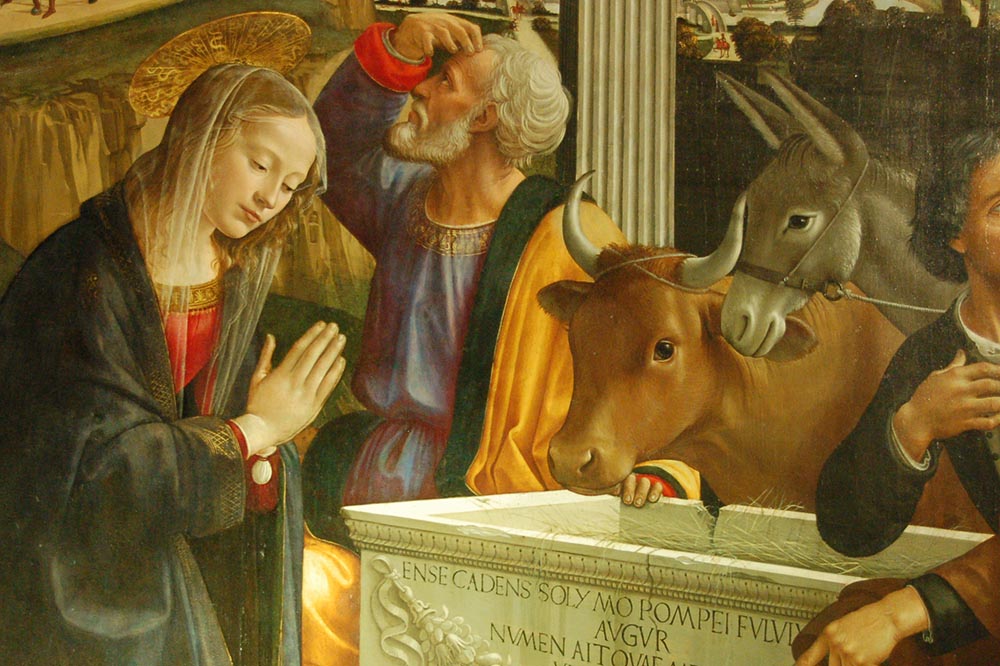Most representations of Jesus’ birth show donkeys, cows, and sheep watching over the Holy Family and a camel or two arriving with the Three Kings. Artistic renderings may include animals that are native to the artist’s country. For example, an African artist might include a zebra or a giraffe at the manger scene.
But what animals were really there at the manger on the first Christmas? The answer is surprisingly unclear.
In his book Jesus of Nazareth: The Infancy Narratives, Pope Benedict XVI writes, “In the gospels there is no mention of animals” at the Holy birth. He contends that that references to the ox and the donkey in other parts of the Bible may led Christians to include them in nativity scenes.
The donkey is the animal most commonly seen in the Nativity. Many scholars believe Mary rode to Bethlehem on a donkey, and, as a result, many artistic representations show Joseph leading Mary into town as she rides on the back of a donkey. Donkeys were a common mode of transportation for the poor in biblical times.
However other historians write that Mary and Joseph may have traveled in a caravan to the census taking. Traveling in a caravan was a common practice and was seen as much safer then traveling alone. If that were the case, Mary may have ridden in a basket secured to a camel.
Many nativity scenes also include an ox and/or a cow near the cradle or nestling in the manger. Sources for the presence of these animals go back to the Old Testament Book of Isaiah (“The ox knoweth his owner, and the ass his master’s crib; but Israel doth not know, my people doth not consider” – Isaiah 1:3).
Another source may be the 7th century text called the Gospel of Pseudo-Matthew, which states, “And on the third day after the birth of our Lord Jesus Christ, Mary went out of the cave, and, entering a stable, placed the child in a manger, and an ox and an ass adored him. Then was fulfilled that which was said by the prophet Isaiah, “The ox knows his owner, and the ass his master’s crib.”
Cattle become firmly associated with modern nativity scenes after the publication in the late 19th century of the beloved Christmas carol “Away in a Manger” and its phrase “the cattle were lowing.”

Sheep are also included in most manger scenes, typically standing or lying near the shepherds. Some scholars theorize that Jesus was born several of miles outside of Bethlehem near a special shepherds’ watch tower called the Migdal Eder. Therefore, it is certainly possible that shepherds and their sheep visited the manger.
The Wise Men from the East arrived with gifts for the Christ child after the birth, and that is why many families choose to set up their nativity scenes with the Kings at a distance from the manger. It is likely the Kings rode to Bethlehem on camels, but we do not know if a camel was there at the time of the birth.
Despite his inconclusive research about animals in the manger, Pope Benedict conceded in his book that “No nativity scene will give up its ox and donkey.” In fact, the Vatican itself always includes animals in the nativity scenes it sets up St Peter’s Square each year.
Historically accurate or not, creche animals are here to stay.
“The striking thing about creches is that they reflect both a common faith and the unique culture of the people who created them,” writes Matthew Powel in his book The Christmas Creche. “The manger scene continues to proclaim that all people are welcome at the stable of Bethlehem.”
All people – and animals.
